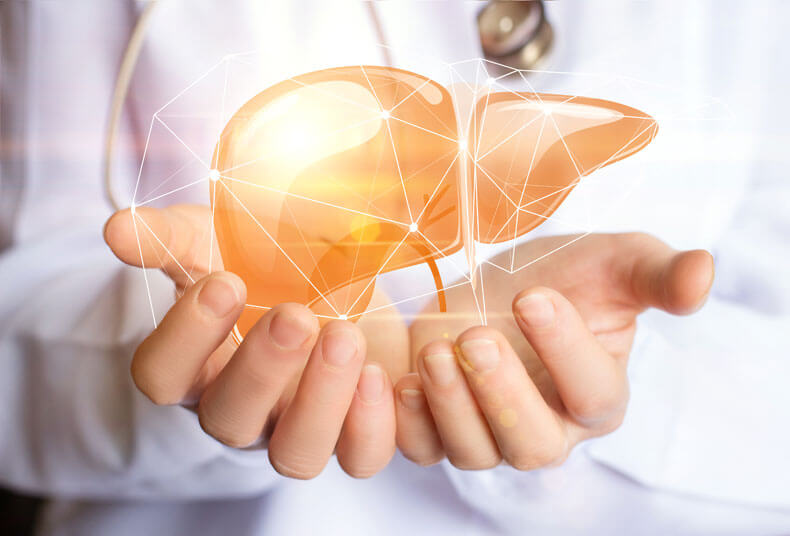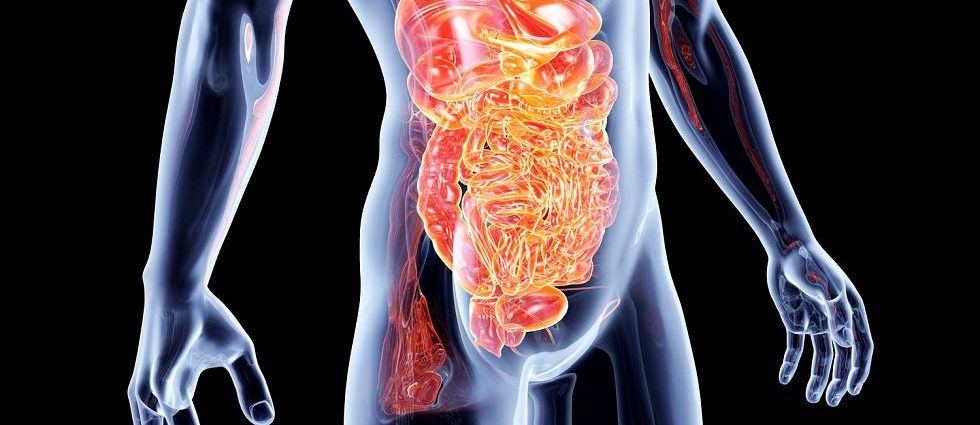Our bodies are marvels of self-maintenance, equipped with sophisticated systems designed to ensure our survival and optimal functioning. Among these, the detoxification pathways stand out as critical components of our internal machinery, tirelessly working to cleanse our system of toxins and waste products that could otherwise harm us. The liver, kidneys, and lymphatic system are the pillars of this detox process, each playing a distinct yet interconnected role in purifying our bodies.
Understanding how these Detox Pathways work can enlighten us on the importance of maintaining a healthy lifestyle and potentially guide us toward making choices that support our body’s natural ability to detoxify. Through this exploration, we aim to demystify the concept of detox and shed light on the natural processes that protect our health every day.
The Liver: The Detox Powerhouse

The liver is nothing short of a biological marvel, often referred to as the body’s detox powerhouse, and for good reason. Its central role in the detoxification process is a testament to the intricate design of the human body. Acting as a filter, it meticulously processes everything we consume, from the food we eat to the air we breathe, ensuring that harmful substances are neutralized before they can wreak havoc on our systems.
Function of The Liver in Detoxification:
The liver’s detoxification process is multifaceted and operates on two primary levels, known as Phase 1 and Phase 2 detoxification pathways. During Phase 1, the liver uses enzymes known as cytochrome P450 to transform toxic substances into less harmful ones. This process, however, sometimes produces free radicals, which, if not neutralized, can lead to oxidative stress and damage to the body’s cells.
To counteract this, Phase 2 comes into play, where the liver adds another molecule to the now less harmful substance, making it water-soluble and, therefore, easier to eliminate from the body through urine or bile. This dual-phase approach is a testament to how well-equipped the liver is in managing the detoxification process.
Moreover, the liver is responsible for breaking down excess hormones and alcohol, regulating cholesterol levels, and assisting in the metabolism of fats, proteins, and carbohydrates. It’s a tireless worker, constantly filtering the blood to remove toxins and producing bile, a substance crucial for digesting fats and absorbing vitamins A, D, E, and K.
Ensuring the liver is functioning optimally is key to overall health. Simple lifestyle choices such as maintaining a balanced diet, limiting alcohol intake, and avoiding exposure to toxic substances can support the liver’s health and detoxification capabilities.
The Kidneys: Filtering Toxins
Just as pivotal in the body’s detoxification process are the kidneys. These bean-shaped organs, located below the rib cage on either side of the spine, might be small, but their contribution to cleansing the body of toxins is immense. Daily, they filter and clean approximately 120 to 150 quarts of blood, producing about 1 to 2 quarts of urine, which carries waste products and excess substances out of the body.
How The Kidneys Contribute to Detoxification?
The kidneys’ approach to detoxification is fundamentally a filtration process. They meticulously sift through the blood, removing waste products, toxins, and excess substances, such as sodium, from the body. This is achieved through a complex system of nephrons, the functional units of the kidneys, each capable of filtering small amounts of blood to remove unwanted substances.
The filtration process begins in the glomerulus, a tiny blood vessel in the nephron, where blood is initially filtered to separate waste products and excess substances from the blood cells and protein. The filtered fluid then travels through the tubule, a component of the nephron, which reabsorbs water and nutrients back into the bloodstream, leaving behind waste products that are converted into urine.
Furthermore, the kidneys regulate the body’s fluid balance, ensuring that the concentrations of various ions and substances are in check, and play a critical role in regulating blood pressure, electrolyte balance, and red blood cell production.
Maintaining kidney health is crucial for effective detoxification. Staying hydrated is one of the simplest yet most effective ways to support kidney function. Additionally, reducing salt intake, managing blood pressure, and avoiding substances that can harm the kidneys, such as non-prescription drugs and excessive alcohol, can also help preserve their health and functionality.
In conclusion, the liver and kidneys are indispensable in the body’s detoxification process, each playing distinctive yet complementary roles. Ensuring their optimal function through healthy lifestyle choices is fundamental to supporting the body’s natural detoxification pathways, reinforcing the importance of these organs in maintaining holistic health and well-being.
The Lymphatic System: Cleaning the Cellular Waste
The lymphatic system, a less frequently discussed yet vital aspect of our body’s detoxification process, performs the indispensable task of maintaining the fluid balance within the body and functions as a crucial part of the immune system. It comprises a network of tissues and organs, including lymph nodes, the spleen, thymus, and lymphatic vessels, that help rid the body of toxins, waste, and other unwanted materials.
Overview of The Lymphatic System’s Role in Detox Pathways
At its core, the lymphatic system’s role in detox pathways revolves around the transportation of lymph, a fluid containing infection-fighting white blood cells, throughout the body. Unlike the cardiovascular system, which uses the heart as a pump, the lymphatic system relies on the movement of our muscles to propel lymph fluid through the vessels. This fluid then filters through lymph nodes, where it is cleansed of harmful substances, including bacteria and cancer cells, before being returned to the bloodstream.
The lymphatic system’s ability to handle cellular waste and excess fluids plays a critical role in preventing tissue swelling (edema) and infection. By transporting waste products away from the tissues and back into the circulatory system, it essentially acts as a “waste disposal” mechanism at the cellular level, ensuring that our body’s cells operate in a clean environment. This is crucial for the overall detoxification process, which aims not only to eliminate toxins from our external environment but also to manage and dispose of the by-products produced by our metabolic processes.
Integrating lifestyle practices that support lymphatic health can significantly enhance this natural detoxification process. This includes engaging in regular exercise, which stimulates lymph flow, consuming a healthy diet rich in antioxidants and anti-inflammatory foods, staying hydrated to maintain fluid balance, and practicing stress-reduction techniques that help protect the immune system’s integrity.
Interconnection of Detox Pathways:
Understanding how the body’s detoxification pathways work in harmony reveals the intricate balance and interdependence of various organ systems in sustaining health and preventing disease. The liver, kidneys, and lymphatic system, each with distinct roles, collaborate closely to ensure toxins are identified, processed, and eliminated efficiently from the body.
How Do The Liver, Kidneys, and Lymphatic System Work Together?
The synergy between the liver, kidneys, and lymphatic system is a testament to the body’s sophisticated approach to detoxification. This interconnection starts with the liver, the body’s primary detox organ. The liver filters blood coming from the digestive tract before it passes to the rest of the body, removing toxins and breaking them down into water-soluble forms. These processed toxins are then made ready for elimination through either the kidneys or the lymphatic system.
The kidneys play a pivotal role in filtering and excreting these toxins through urine. They meticulously maintain fluid and electrolyte balance, which is critical for all bodily processes. The kidneys’ efficient management of bodily fluids ensures that toxins processed by the liver are diluted and safely removed from the body without causing harm.
Simultaneously, the lymphatic system addresses cellular waste and excess fluids not handled by the liver or kidneys. It acts as a secondary route for the removal of waste products from the liver’s metabolic processes, facilitating further filtration and ensuring these substances are ultimately excreted from the body. Moreover, its contribution to immune function directly supports detoxification by protecting the body against infection and disease, which can result from the accumulation of toxins.
The interplay between these systems illustrates a remarkable example of the body’s detoxification process as a comprehensive and collaborative effort. By supporting each organ system through healthy lifestyle choices—such as maintaining a nutrient-rich diet, staying hydrated, engaging in regular exercise, and ensuring adequate rest—we can enhance our body’s natural ability to detoxify and protect against illness and disease. Understanding this interconnectedness empowers us to take proactive steps toward maintaining our health, highlighting the importance of a holistic approach to wellness that nurtures each detox pathway.
Lifestyle Changes to Support Detox:

Making meaningful lifestyle changes is crucial for enhancing the body’s natural detoxification processes. By adjusting our diets, staying hydrated, and incorporating physical activity, we can support our liver, kidneys, and lymphatic system more effectively. Such changes not only help in detoxification but also contribute to a more vibrant and healthier life.
Diet Modifications for Detox Support
To support your body’s detox pathways, incorporating a diet rich in fruits, vegetables, whole grains, and lean proteins is essential. These food groups provide the necessary nutrients and antioxidants that aid in the elimination of toxins. Consider the following dietary modifications:
- Increase your intake of fiber-rich foods, such as berries, beans, and leafy greens, to help maintain healthy bowel movement.
- Incorporate liver-supporting foods like garlic, beets, and lemons, which enhance the liver’s capability to filter toxins.
- Opt for organic produce when possible to reduce exposure to pesticides and chemicals.
- Limit processed foods, sugars, and unhealthy fats, which can burden the liver and impede detoxification.
Importance of Hydration in Detox Pathways:
Hydration plays a pivotal role in the functioning of detox pathways. Water is essential for kidney function, helping these organs filter waste from the blood and excrete toxins through urine. Furthermore, proper hydration supports the lymphatic system, allowing it to transport immune cells throughout the body and remove waste. To optimize the detoxification process, consider the following tips:
- Aim to drink at least 8-10 cups of water daily, or more if you’re physically active or live in a hot climate.
- Incorporate hydrating foods into your diet, such as cucumbers, melons, and celery.
- Limit beverages that can dehydrate the body, like alcohol and high-caffeine drinks.
- Drinking herbal teas, such as dandelion or milk thistle tea, can also support liver health and hydration.
By implementing these dietary and hydration strategies, you can support your body’s natural detoxification systems, enhancing your overall well-being and health.

